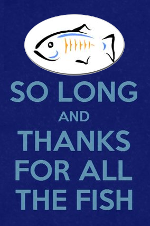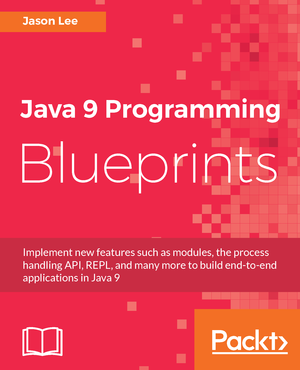As more and more of our applications move into "the cloud", multi-tenancy has become a pretty big thing these days. In a nutshell, "multi-tenancy" means handling multiple customers data using, say, a single server. This concept scales, of course, to clusters, etc., but the concept is the same: a bunch of people’s data all mixed together in one big bucket. The problem, then, for the development team is isolating one customer’s data from another’s, disallowing, for example, the viewing or editing of another customer’s information. There are a myriad of ways to accomplish this, but I’d like to discuss here a way to accomplish this using a single database.
To all of my readers, I wish you all a very Merry Christmas. My hope, as always, is that even in the busyness and the hustle of the Christmas season, you will find the peace and joy of God brought to us so many years ago in the birth of the Christ child.
I recently received a copy of RESTful Java Patterns and Best Practices, by Bhakti Mehta for review. Here are my thoughts on the book.
Yesterday, at the OKC JUG, I presented on the topic of Contract-first REST API development with RAML. This post is a rough blogification of that discussion. For those of you who were at the meeting, the preamble to the source demo (introduction, background, options discussion, etc) have been not been reproduced here.
tl;dr: You can find the demo source here and play around with it.
 As so many of my friends and peers have done before me, it’s time to use that admittedly overplayed Douglas Adams quote and announce my departure from Oracle.
As so many of my friends and peers have done before me, it’s time to use that admittedly overplayed Douglas Adams quote and announce my departure from Oracle.
I joined Sun Microsystems in July of 2008 as a member of the GlassFish team, working primarily on the Administration Console. Over time, I would add REST to my work load, which has been my primary responsibility for the past few years.
I’ve had the opportunity and honor to work with some very smart and talented people over the last six years. I’ve learned a lot from them, and made some great friends. While it’s nothing as drastic as the destruction of the Earth to make way for an intergalactic highway, the time has come, though, to bid farewell to those friends and the job that’s offered me so much opportunity and growth and move on to a new venture and more great opportunities and chances to learn and grow.
It’s been a pleasure.
I’ve been toying with using DropWizard as my… deployment platform for a personal project, but I need/want JAX-RS 2 and CDI, which is a problem for the the stable DW. There is a branch that is migrating to JAX-RS 2 (and Jersey 2.9), and it sort of works, but trying a simple injection is causing a failure I can’t quite figure out:
Caused by: A MultiException has 1 exceptions. They are:
1. org.glassfish.hk2.api.UnsatisfiedDependencyException: There was no object available for injection at Injectee(requiredType=SayHelloService,parent=HelloWorldResource,qualifiers={}),position=-1,optional=false,self=false,unqualified=null,288169102)
at org.jvnet.hk2.internal.ThreeThirtyResolver.resolve(ThreeThirtyResolver.java:74)
at org.jvnet.hk2.internal.Utilities.justInject(Utilities.java:838)
at org.jvnet.hk2.internal.ServiceLocatorImpl.inject(ServiceLocatorImpl.java:890)
at org.jvnet.hk2.internal.ServiceLocatorImpl.inject(ServiceLocatorImpl.java:880)
at org.glassfish.jersey.server.ApplicationHandler.initialize(ApplicationHandler.java:517)
at org.glassfish.jersey.server.ApplicationHandler.access$500(ApplicationHandler.java:163)
at org.glassfish.jersey.server.ApplicationHandler$3.run(ApplicationHandler.java:323)
at org.glassfish.jersey.internal.Errors$2.call(Errors.java:289)
at org.glassfish.jersey.internal.Errors$2.call(Errors.java:286)
at org.glassfish.jersey.internal.Errors.process(Errors.java:315)
at org.glassfish.jersey.internal.Errors.process(Errors.java:297)
at org.glassfish.jersey.internal.Errors.processWithException(Errors.java:286)
at org.glassfish.jersey.server.ApplicationHandler.<init>(ApplicationHandler.java:320)
at org.glassfish.jersey.server.ApplicationHandler.<init>(ApplicationHandler.java:285)
at org.glassfish.jersey.servlet.WebComponent.<init>(WebComponent.java:310)
at org.glassfish.jersey.servlet.ServletContainer.init(ServletContainer.java:170)
at org.glassfish.jersey.servlet.ServletContainer.init(ServletContainer.java:358)
at javax.servlet.GenericServlet.init(GenericServlet.java:244)
at org.eclipse.jetty.servlet.ServletHolder.initServlet(ServletHolder.java:540)
... 36 more
Caused by: org.glassfish.hk2.api.UnsatisfiedDependencyException: There was no object available for injection at Injectee(requiredType=SayHelloService,parent=HelloWorldResource,qualifiers={}),position=-1,optional=false,self=false,unqualified=null,288169102)
... 55 more
If I create the Weld runtime and request the beans specifically, I get to good objects (instances of both A and B, with B having an injected instance of A), but once I tell DW to fire things, the app dies:
1
2
3
4
5
6
7
8
9
10
11
12
Weld weld = new Weld();
WeldContainer container = weld.initialize();
container.instance().select(SayHelloService.class).get();
SayHelloService service = WeldContext.INSTANCE.getBean(SayHelloService.class);
final HelloWorldResource resource = container.instance().select(HelloWorldResource.class).get();
resource.setTemplate(configuration.getTemplate());
resource.setDefaultName(configuration.getDefaultName());
final TemplateHealthCheck healthCheck
= new TemplateHealthCheck(configuration.getTemplate());
environment.healthChecks().register("template", healthCheck);
environment.jersey().register(resource);
It seems, then, my deployment environment will be, at least for now, a Java EE app server. They’re small enough these days that it really shouldn’t matter. I was just curious to see if DW might be viable for me, and it appears that the answer is "not yet".
I’ll check back later.
Carl Dea, this time with the help of Mark Heckler, Gerrit Grunwald, José Pereda, and Sean Phillips, recently published an updated and greatly expanded introductory work on JavaFX, with both the title and content updated to reflect the updates in the JDK and library.
tl;dr: A solid introduction with a plethora of usable examples. You can purchase it here.
I have a personal LiveJournal blog that I’d like to migrate to Awestruct. Unfortunately, LiveJournal’s export tool is really limited, allowing the export of only one month at a time. There are tools to work around that, but the only ones I’ve seen require Windows, which rules me out. In typical geek fashion, then, I wrote my own tool, ljexport, a very quick-and-dirty JavaFX 8 application. All this does is export each month to its own file. Once you have the data, you’re on your own. :)
I’ve been tinkering with a couple of different JavaFX projects for a while now. Due to other commitments, they’ve been largely ignored recently, but I made some time this weekend to return to them. Since I last looked at them, Java 8, and, thus, JavaFX 8, have been release, so I decided to see how the tooling in NetBeans has changed to stay apace with the development of the libraries. While there are certainly updates, it seems new projects are still built using Ant. Yuck. :P I knew Adam Bien had a Maven archetype for his igniter.fx project, so I took a look to see what that POM does to support JavaFX. As it turns out, it’s pretty simple. For those interested, I have extracted here the basic POM:
Recently, Geertjan Wielenga, Principal Product Manager in the Oracle Developer Tools group, posted a video on his blog showing "14 NetBeans Web Development Tips in 7 Minutes", which showed off several nice tips for the IDE (#1 and #5 are my favorites). If you’re like me, sometimes you don’t have (or don’t want to make) time to watch a video, so I thought I’d make a table of contents for the video, with links to relevant portion of it for those that would like to read the list and watch only the parts that interest them.
 My name is Jason Lee. I am a software developer living in the middle of Oklahoma. I’ve been a professional developer since 1997,
using a variety of languages, including Java, Javascript, PHP, Python, Delphi, and even a bit of C#. I currently work for Red Hat
on the WildFly/EAP team, where, among other things, I maintain integrations for some MicroProfile specs, OpenTelemetry, Micrometer,
Jakarta Faces, and Bean Validation. (Full resume
My name is Jason Lee. I am a software developer living in the middle of Oklahoma. I’ve been a professional developer since 1997,
using a variety of languages, including Java, Javascript, PHP, Python, Delphi, and even a bit of C#. I currently work for Red Hat
on the WildFly/EAP team, where, among other things, I maintain integrations for some MicroProfile specs, OpenTelemetry, Micrometer,
Jakarta Faces, and Bean Validation. (Full resume 